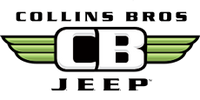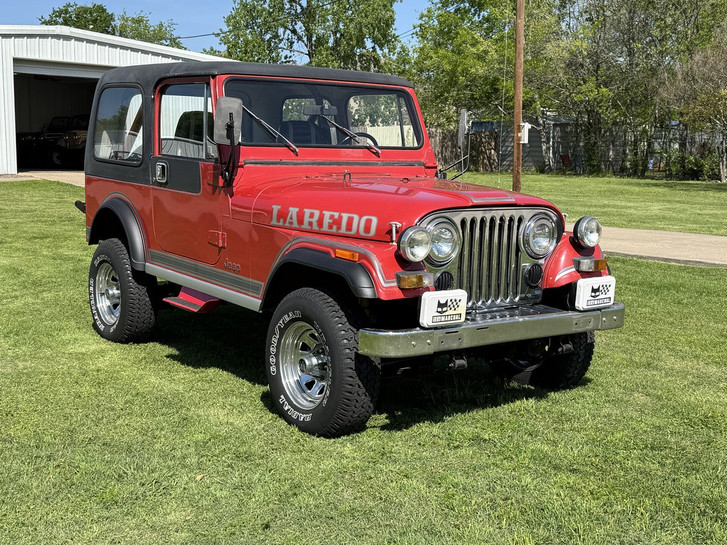There’s something special about classic Jeep restoration. It’s more than wrenching on an old 4x4—it’s about rebuilding memories, chasing originality, and customizing every bolt to match your vision. Whether you're hunting down a factory-stamped tailgate or comparing OEM and aftermarket options, every step brings a mix of challenge and reward.
The process includes tracking down authentic parts, verifying what’s real, and figuring out which components make sense for your build, budget, and long-term plans.
Classic Jeep Restoration: A Labor of Love
Restoring a vintage Jeep model like a CJ-5, CJ-7, or an early Wrangler isn’t just about swapping out old for new. It’s about preserving a piece of history—whether you’re fixing up your granddad’s CJ that’s been sitting in the barn, or you scored a rusted YJ off Craigslist. Each model tells its own story. The flat fenders of early CJs, the boxy charm of the YJ’s square headlights—they all bring character that today’s Jeeps just don’t have.
These older models, especially the CJ-5s and CJ-7s, were used for everything from military missions to farm work and off-road recreation. That kind of legacy deserves more than a quick patch job. Sure, restoring vintage Jeep models is a grind, but hunting down rare parts becomes part of the thrill. For a deep dive on CJ restoration, check out this guide on restoring a CJ7 Jeep.
Hard-to-Find Jeep Body Parts
If you’ve started your restoration already, you’ve probably hit a wall looking for certain parts. As Jeeps age, many original components stop being manufactured, and what’s left ends up in collections, junkyards, or buried in online marketplaces. These rare pieces aren’t just for looks; they’re essential for keeping the structural integrity of your rig intact.
Jeep Wrangler Classic Body Panels
YJ and TJ Wranglers are notorious for needing full side panels, quarter panels, and tailgates that are model-specific. Reproductions exist, but they often lack the correct factory stampings or mounting dimensions.
Steel Tub Bodies
Original steel tubs, especially for CJ-7s and CJ-5s, are like gold. Most restorers turn to fiberglass tubs, but those don’t carry the same value—or the same durability.
Fenders and Hoods
Even the fenders can cause headaches. The curvature and bolt patterns on early CJ fenders are different depending on the year, and a mismatch means headaches during reassembly.
Windshield Frames
These rust like crazy. And because every model year has slightly different mounting dimensions, you can’t just grab any old frame and hope it fits.
Original Grilles
You can spot a CJ grille from across a parking lot. The spacing and design changed from model to model, so finding one that hasn’t been mangled or modified is a serious win.
Factory Tailgates with Jeep Stamping
You’ll spot a lot of tailgates out there, but very few still carry the original Jeep stamp. And if they do, they’re either rusted through or overpriced.
Dash Panels and Glove Boxes
Interior components are often overlooked, but original dash panels, especially with intact gauge cutouts and VIN mounts, are getting rare.
OEM Roll Bars and Sport Cages
Many Jeeps got upgraded with aftermarket cages, which is great for safety, but if you're going for authenticity, original factory bars are the way to go.
Some of the Rarest Finds:
- CJ-8 Scrambler hardtops and rear half-tubs
- OEM stamped steel tailgates for CJ-7s
- Passenger-side drop Dana 44 front axles
- 1980s factory dash switch panels
- Stamped “Jeep” fender flares and fuel filler bezels
When you're hunting these parts, know your Jeep down to the VIN. Even a small curve or bolt difference can throw your whole fit off. Stick with factory service manuals or VIN-tagged reference charts to save yourself the hassle.
Where to Buy Classic Jeep Parts?
Tracking down original Jeep parts is like a treasure hunt. It can be frustrating, but it’s also one of the most rewarding parts of the restoration process. If you’re serious about keeping your build true to its roots, you’ve got to be strategic about where you look.
Best Sources for Rare Jeep Parts
- Salvage Yards: Dedicated Jeep salvage yards are your secret weapon. These places often have racks of old Wranglers and CJs waiting to be picked. Just be ready to call around and maybe drive a few hours.
- Online Marketplaces: Sites like eBay and Jeep-specific forums often have listings for original parts. Be careful, though—condition and authenticity vary, so ask for detailed photos and part numbers.
- Authentic Jeep parts Suppliers: These companies focus on creating OEM-style or exact reproduction parts. If you’re serious about proper fit and finish, this is your best bet. Sure, you’ll pay a bit more—but the peace of mind is worth it when the part bolts right in.
- Specialty Jeep Restoration Shops: Shops like Collins Bros Jeep don’t just stock parts—we live and breathe classic Jeep restoration. Whether you need advice, sourcing help, or full-blown consulting, we’ve got your back.
Tips for Restoring Classic Jeeps
If you're serious about restoring a classic Jeep, you already know it's more than just wrenching—it's about getting the details right. Whether you're chasing that original factory look or building something a little more modern, there are a few key things you should always keep in mind.
- Inspect Parts for Originality: Start by checking for OEM stamps, part numbers, or date codes on every part you find. That’s how you know if you’re holding something that came straight off the factory floor. It adds value to your build and keeps your Jeep as authentic as possible.
- Avoid Getting Burned: Don’t trust every listing you see online. Before you hit “buy,” make sure the seller is legit. Ask for detailed photos, request documentation if possible, and always check their reviews. Better yet, hit up Jeep forums or Facebook groups. Other builders can help you confirm if a part fits your year and model—and whether the asking price makes sense.
- Keep It Balanced: Not everything has to be original. Mixing in some modern performance or safety upgrades can make your Jeep more enjoyable to drive without ruining the vintage vibe. Think modern disc brakes, LED lighting, or better suspension that still keeps the old-school look.
- Use Tech to Your Advantage: You don’t have to guess when it comes to part fitment. CAD files, blueprint resources, and spec sheets are out there to help you match things precisely. It saves time, money, and a whole lot of headaches.
OEM vs Aftermarket Classic Jeep Parts
This is a big decision in any classic Jeep restoration: should you go OEM or aftermarket?
OEM (Original Equipment Manufacturer)
- Pros: You get an exact fit, factory finish, and it keeps your Jeep true to the original. That’s a big deal for collectors.
- Cons: They're harder to find and usually more expensive.
Aftermarket Parts
- Pros: These are budget-friendly, easier to get, and often come with custom options.
- Cons: Quality varies, and some don’t match the original specs or finish. Want to know when used parts are worth it? Check out this guide on used Jeep Parts.
So what’s the move? Use OEM for body panels, grilles, and anything visible or structural. Save money with aftermarket for non-critical parts or performance upgrades. And if you're unsure, talk to experts. Collins Bros Jeep offers advice and rare parts—request what you need.
Collins Bros Jeep: Restoring Vintage Jeep Models
If you’re serious about restoring your classic Jeep, you want someone who knows these vehicles inside and out. With over 30 years of experience, we’ve built a reputation around quality, reliability, and Jeep expertise.
From CJ models to Scramblers and early Wranglers, we’ve restored them all. We carry a massive inventory of OEM and premium aftermarket Jeep parts.
Whether you need a frame-off restoration, body panel replacement, or off-road upgrades, our team has the tools and know-how to get it done right. Every build is tailored to your Jeep and your vision, and we ship parts nationwide.
Need help planning your project or tracking down that hard-to-find part? Get in touch with us for a consultation. We'll help you bring your build to life—just the way you imagined it.


